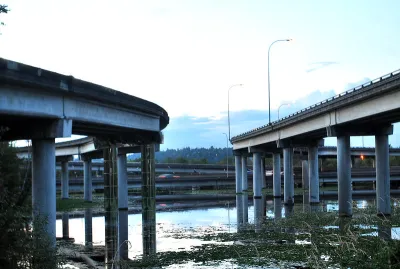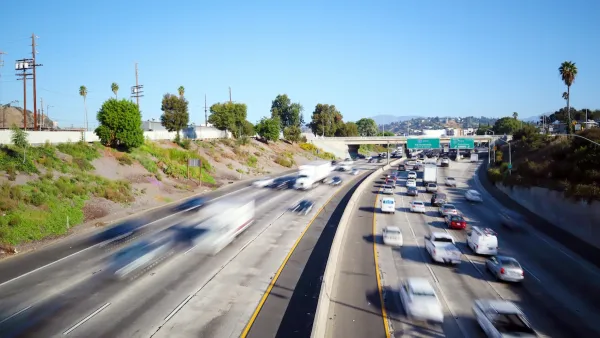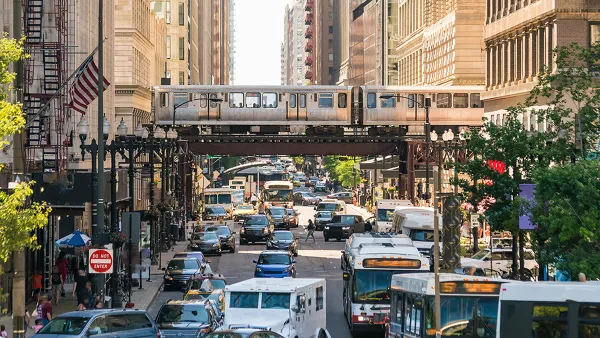The history of Seattle's opposition to car infrastructure is being commemorated while it's being made.

Knute Berger and Stephen Hegg write to update the history of Seattle's "ramps to nowhere"—the vestiges of the city's mid-20th century freeway building binge that came to a halt in a wave of environmental activism in 1972.
The most famous example of ramps to nowhere, and the subject of this exploration, are the remnants of the R.H. Thomson Expressway.
R.H. Thomson Expressway on and offramps had been built when the Evergreen Point Bridge — the State Route 520 floating bridge — was built in the early 1960s. They just sat waiting for the expressway to be attached. But they stood unconnected, like ancient ruins or garden follies. Instead of carrying cars, kids would jump off them into Lake Washington during warm summer days. They were used by swimmers and sunbathers. They were very expensive diving boards.
As noted by Berger and Hegg, the R.H. Thompson Expressway ramps to nowhere have taken on a symbolism attached to the civic activism that halted construction of the project. In the past, residents have advocated for the preservation of the ramps to commemorate those efforts. According to the article, one ramp will remain standing for that purpose, but the rest are coming down.
In a bit of synchronicity between past and present, the city of Seattle is currently debating the need to expand some of its existing bridges for cars, as highlighted in a separate article by the editorial board of The Urbanist. The Magnolia Bridge, "[s]erving a peninsula with some 20,000 residents and two other bridges over the Interbay railyard," is the perfect example of the tendency for elected officials in Seattle to push for car infrastructure as a matter of regional and even national priority (in that way, Seattle-area politicians certainly resemble politicians in other corners of the country). Clearly, the editorial board of The Urbanist aims to follow in the footsteps of their anti-highway forebears.
FULL STORY: An end to Seattle’s ramps to nowhere

National Parks Layoffs Will Cause Communities to Lose Billions
Thousands of essential park workers were laid off this week, just before the busy spring break season.

Retro-silient?: America’s First “Eco-burb,” The Woodlands Turns 50
A master-planned community north of Houston offers lessons on green infrastructure and resilient design, but falls short of its founder’s lofty affordability and walkability goals.

Delivering for America Plan Will Downgrade Mail Service in at Least 49.5 Percent of Zip Codes
Republican and Democrat lawmakers criticize the plan for its disproportionate negative impact on rural communities.

Test News Post 1
This is a summary

Test News Headline 46
Test for the image on the front page.

Balancing Bombs and Butterflies: How the National Guard Protects a Rare Species
The National Guard at Fort Indiantown Gap uses GIS technology and land management strategies to balance military training with conservation efforts, ensuring the survival of the rare eastern regal fritillary butterfly.
Urban Design for Planners 1: Software Tools
This six-course series explores essential urban design concepts using open source software and equips planners with the tools they need to participate fully in the urban design process.
Planning for Universal Design
Learn the tools for implementing Universal Design in planning regulations.
EMC Planning Group, Inc.
Planetizen
Planetizen
Mpact (formerly Rail~Volution)
Great Falls Development Authority, Inc.
HUDs Office of Policy Development and Research
NYU Wagner Graduate School of Public Service





























